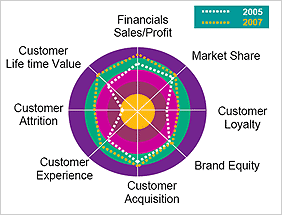Your Guide to Profits: Insights through business analytics
By Balasubramanium Venkitachalam
In the beginning there was data...
Data. It's not only the fuel of today's digital and business world, but there's a lot of it. IBM predicts that by 2010 the size of the world's information base will be doubling every 11 hours. This data explosion means new terms have to be created. So we've come from chatting about kilobytes and megabytes a decade ago to talking terabytes and petabytes and beyond to exabytes, zettabytes and the mind-boggling yottabytes. That's a yotta bytes.
At the business-level this has meant that decision-makers in industry have more data and information on all aspects of their business than ever before. From customer behaviour to business performance, there are few areas of the commercial world that cannot be recorded and calibrated.
The big problem of this is data overload, something that affects many of our clients. A balance is required so that the information can be used to the advantage of the business without overwhelming or distracting it.
Combined with the risk of data overload, the business landscape is reforming and decisions are increasingly needing to be made more quickly (see Marco Rimini's article 'The future of strategic thinking in marketing communications' for our thoughts on the strategic implications of the need for organizations to make faster business decisions). This is mainly due to increasingly rapid and dramatic technological developments - and the associated changes in consumer behaviour. So, to achieve high quality decision-making, there is a fundamental need to organise and analyse all the data in an immediate and insightful way.
'Analytics' refers to the collection of statistical approaches in mining the data that decipher of the influences of key business metrics (e.g. sales, profit, brand awareness/image etc) and that all lead to an understanding of Return on Investment (ROI). It started to be put into practice in the 1960s and 70s, but grew more popular when genuine technological advancements came in and data warehousing progressed.
 In recent years the leaps in technology have also meant an evolution in analytics, an evolution which turns data not only to insights but has moved towards gaining foresight and delivers it swiftly for efficient and effective decision making. Earlier, getting insight meant measuring parameters that affected a brand's performance, such as customer response, market feedback, etc. This later then evolved through analytics in relating those measures with the brand's performance such as sales and profit. At this stage, analytics was used more at a diagnostic level. The evolution is now more in a complete form thanks to the technology boom. Analytics has now allowed us to progress from simple measurement to quantifying the effect of various factors affecting business performance and predicting their impact. This is a shift from simple insights to gaining real foresight. It arms senior management with the tools to move from reactive to proactive decision making.
In recent years the leaps in technology have also meant an evolution in analytics, an evolution which turns data not only to insights but has moved towards gaining foresight and delivers it swiftly for efficient and effective decision making. Earlier, getting insight meant measuring parameters that affected a brand's performance, such as customer response, market feedback, etc. This later then evolved through analytics in relating those measures with the brand's performance such as sales and profit. At this stage, analytics was used more at a diagnostic level. The evolution is now more in a complete form thanks to the technology boom. Analytics has now allowed us to progress from simple measurement to quantifying the effect of various factors affecting business performance and predicting their impact. This is a shift from simple insights to gaining real foresight. It arms senior management with the tools to move from reactive to proactive decision making.
Download the rest of the report (pdf)